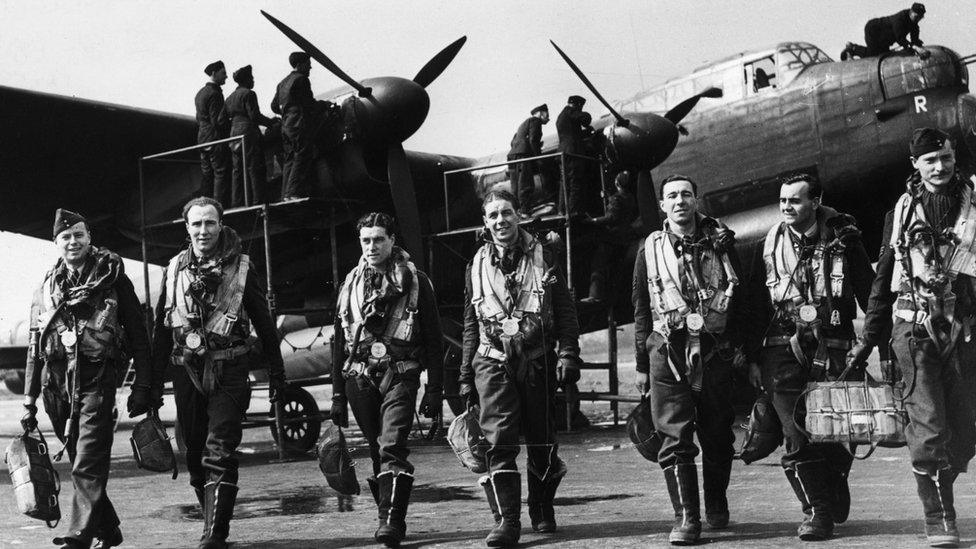Belgian's mission tracing Welsh airman rescued by his aunt
- Published
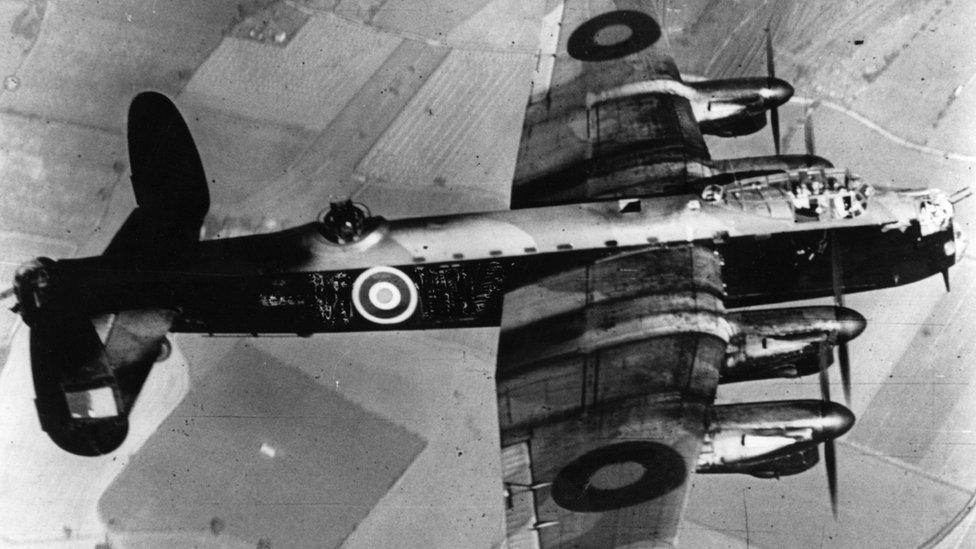
Sgt Griffiths was a Lancaster tail gunner
Joséphine Van Durme's family had no idea exactly what she had done when the Nazis invaded Belgium in 1940.
"La guerre? On ne parle jamais de ça" - "The war? One never talks about it," she would always tell them.
So teacher Gregory Delbrouck and his father were overwhelmed after clearing her apartment at Westmalle near Antwerp when she died aged of 96 in 2009.
Mementoes detailing her past as a resistance fighter, wartime hero and Gestapo prisoner were hidden there.
They also showed her crucial part in the rescue and escape of a Welsh airman, forced to bale out of his stricken Lancaster bomber near her home in 1942.
Gregory, her great-great nephew, has spent months trying to trace what happened to Air Gunner Sgt William Roch Griffiths from Barmouth, Gwynedd.
Sgt Griffiths was the rear gunner - the 'tail-end Charlie' - in 61 Squadron's Mk 1 Lancaster "B for Beer" heading for home after bombing the Krupps works at Essen in Germany in the early hours of 3 June, 1942.
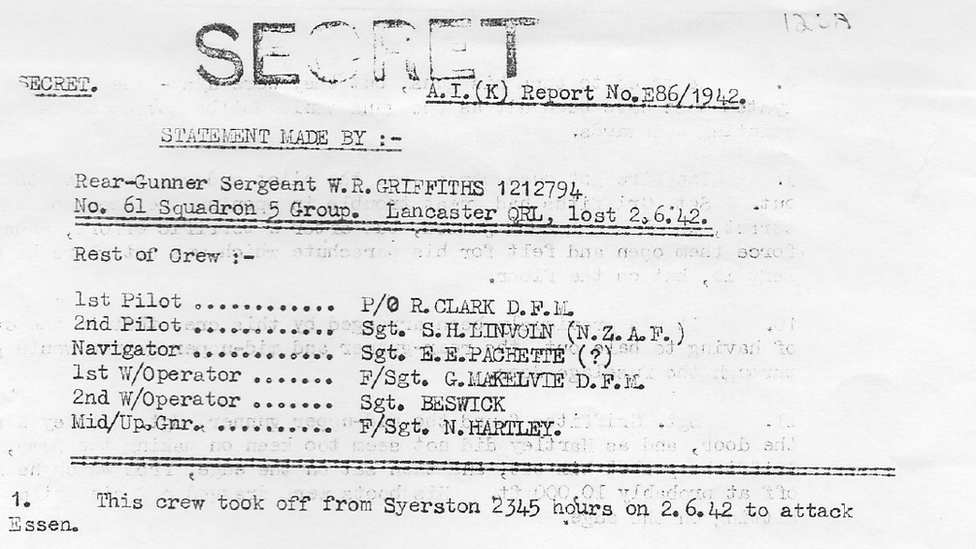
His statement based on his own words from his RAF debrief tells what happened as they were over Belgium, near the Waterloo battleground.
Sgt Griffiths saw a Messerschmitt Bf 109 fighter in the moonlight, turning to attack when "suddenly his turret was smashed from below".
"Another fighter must have come up and attacked from below and hit not only the turret but the whole fuselage and the wings."
Sgt Griffiths was wounded in the arm and "it seemed the whole aircraft was on fire and smoking".
His guns were jammed and with the fire worsening, the pilot Ralph Edward Clark ordered his crew to bale out.
You might also like:
The statement reads: "Sgt Griffiths had great trouble opening the doors of the turret which had become jammed, but after a terrific effort managed to force them open."
He made his way to the fuselage door where he found the mid-upper gunner Sgt Norman Rhodes Hartley.
"As Hartley did not seem too keen on making the jump, Griffiths pushed him out and then sat on the edge, from which he slipped off at probably 10,000ft."
He watched as his burning Lancaster did a half circle before crashing.
The five crew still on board were all killed. Sgt Hartley was never found.
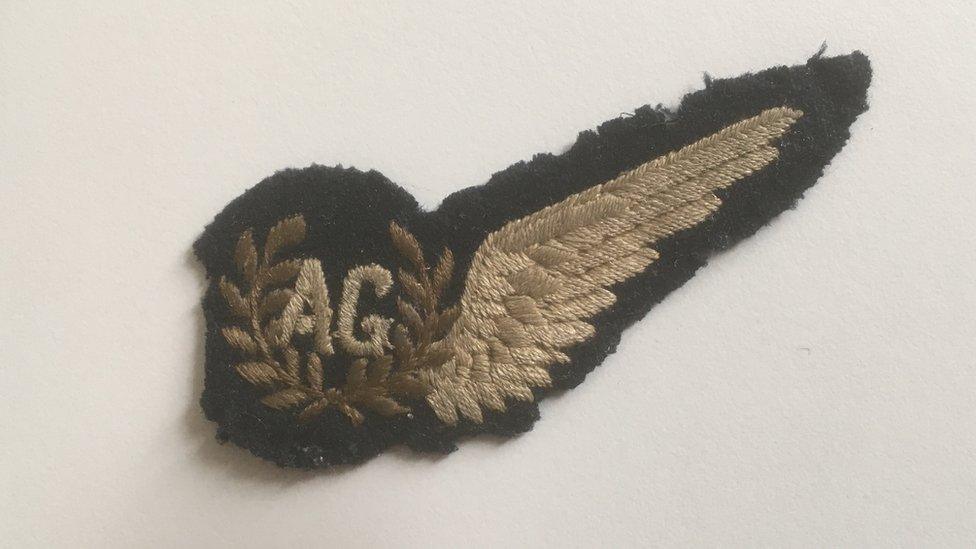
Sgt Griffiths' air gunner patch
Sgt Griffiths landed in a field near a main road, bound his bleeding arm and headed for a cafe he could see.
A Belgian there gave him a pair of shoes as he had lost his in his escape and together they buried his parachute and equipment.
He was put in touch with the Comet Line, the resistance organisation helping allied airmen.
The local leader was Jules Colle and his fiancee, Joséphine Van Durme, then a 27-year-old teacher.
A local doctor patched up Sgt Griffiths and he went into hiding.
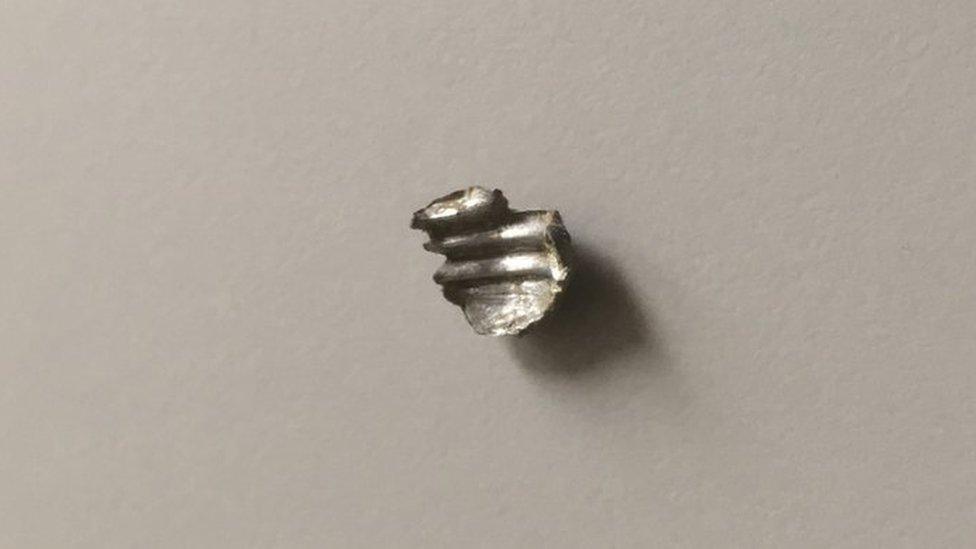
A Belgian doctor removed this piece of shrapnel from Sgt Griffiths' arm
Joséphine guided him on the first leg of his tortuous escape, handed from local cell to cell of the Comet Line through France, over the Pyrenees into Spain and then Gibraltar, all the time posing as a civilian.
But after he sailed back to Britain there is little more information despite Gregory's meticulous research.
"Sgt Griffiths landed in Scotland," he said. "But the truth is the escapees rarely went back into active service.
"They went into training squadrons or other duties," said Gregory.
He has though found a thank you note, written in Welsh.
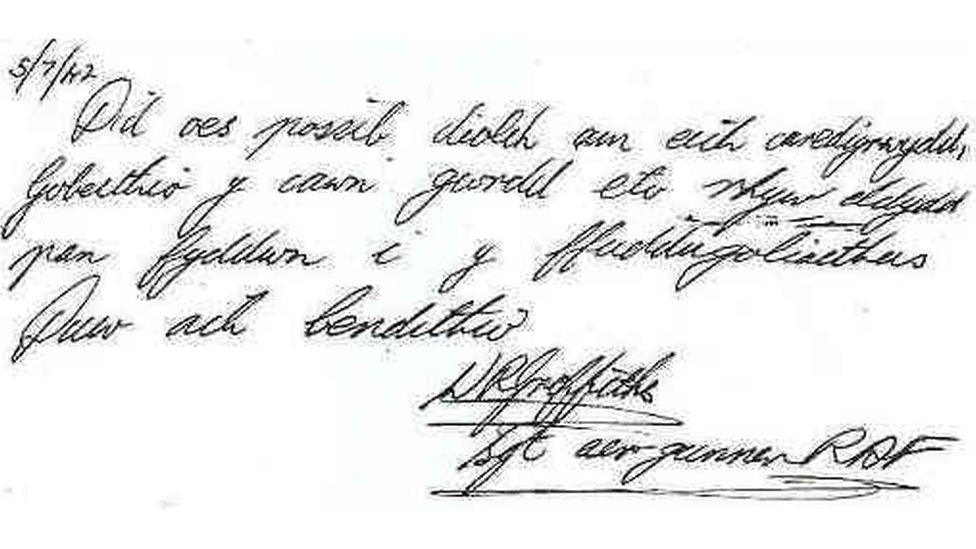
It translates as "There is no possible thanks for your kindness. Hopefully we'll meet again someday when we are victorious. God bless you."
Sgt Griffiths might have escaped but time was running out for Joséphine and her group.
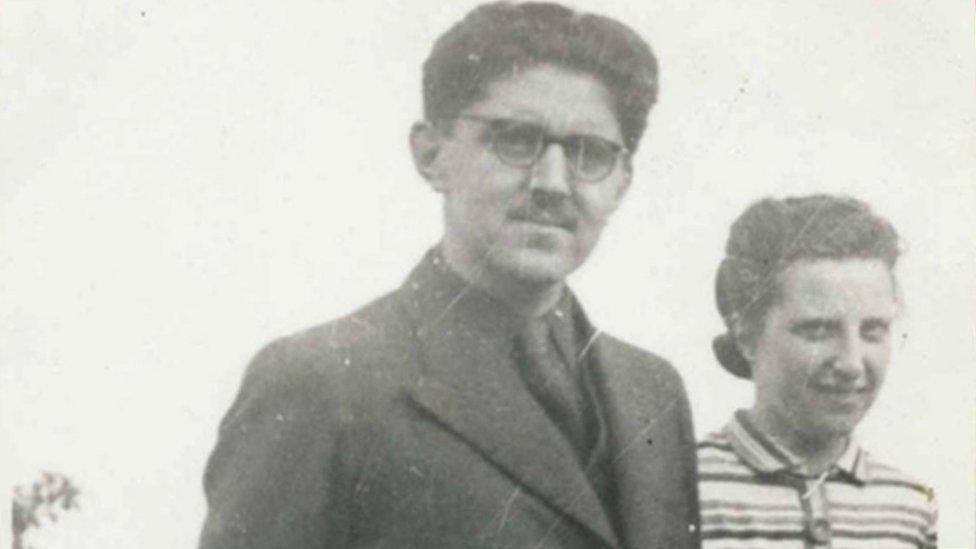
Joséphine Van Durne with her fiance
They were arrested by the Gestapo in November 1943 and Joséphine was to spend the rest of the war in a series of prisons, dubbed the "queen of the liars" by her captors as she never disclosed useful information.
Joséphine was liberated by Russian troops and returned home to Waterloo to resume teaching, eventually becoming a head teacher.
But it was not until the following year that she found out that her fiancé had been shot. She never married.
Her family knew about her links to the resistance and imprisonment but Joséphine refused to talk about it.
Gregory said: "If only she did tell us more so we could have said how proud we were of her."

Josephine Van Durme was welcomed home after the liberation
Meanwhile Gregory continues his search for Sgt Griffiths' family so that he can give them the mementoes.
But he already fears it might be in vain.
"I'm 80% sure that a death certificate I have been sent is that of Sgt Griffiths."
It shows that an RAF airman, William Griffiths, died in hospital in Liverpool from complications associated with cancer in December 1984.
His address is given as Field Lane Centre, Liverpool. It is now the site of a rehabilitation hostel for the homeless and Gregory thinks the original building might have been a similar service for former military personnel.
No family member is named on the certificate. Instead a Jill Duffy is listed and her qualification as "causing the body to be buried".
"That means she might have been a member of staff at the centre," said Gregory.
"Possibly William Griffiths either had no family or was estranged from them."
He is now hoping to be able to track down Jill Duffy to confirm who the airman was.
Said Gregory: "We don't have a picture, we don't even know what he looks like."
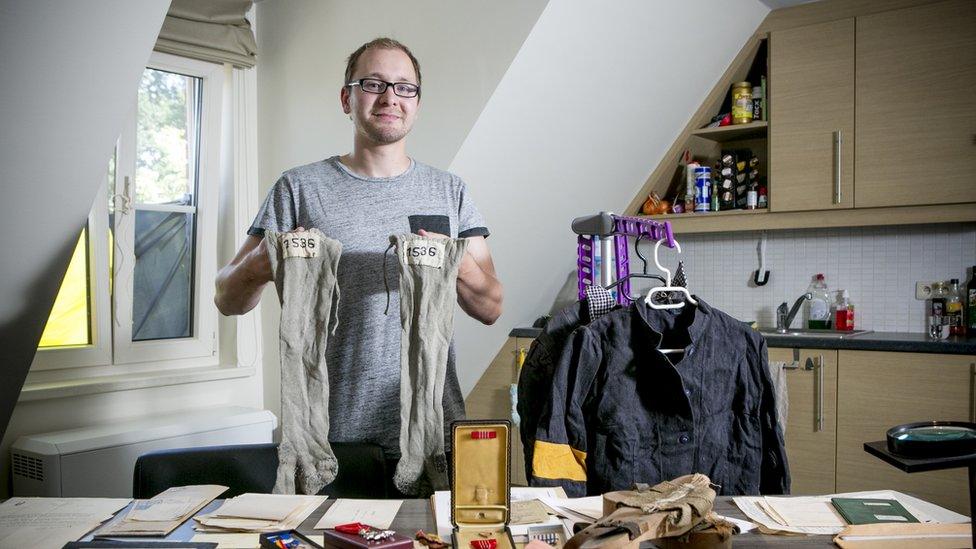
Gregory Delbrouck with his relative's prison clothes
- Published10 July 2018
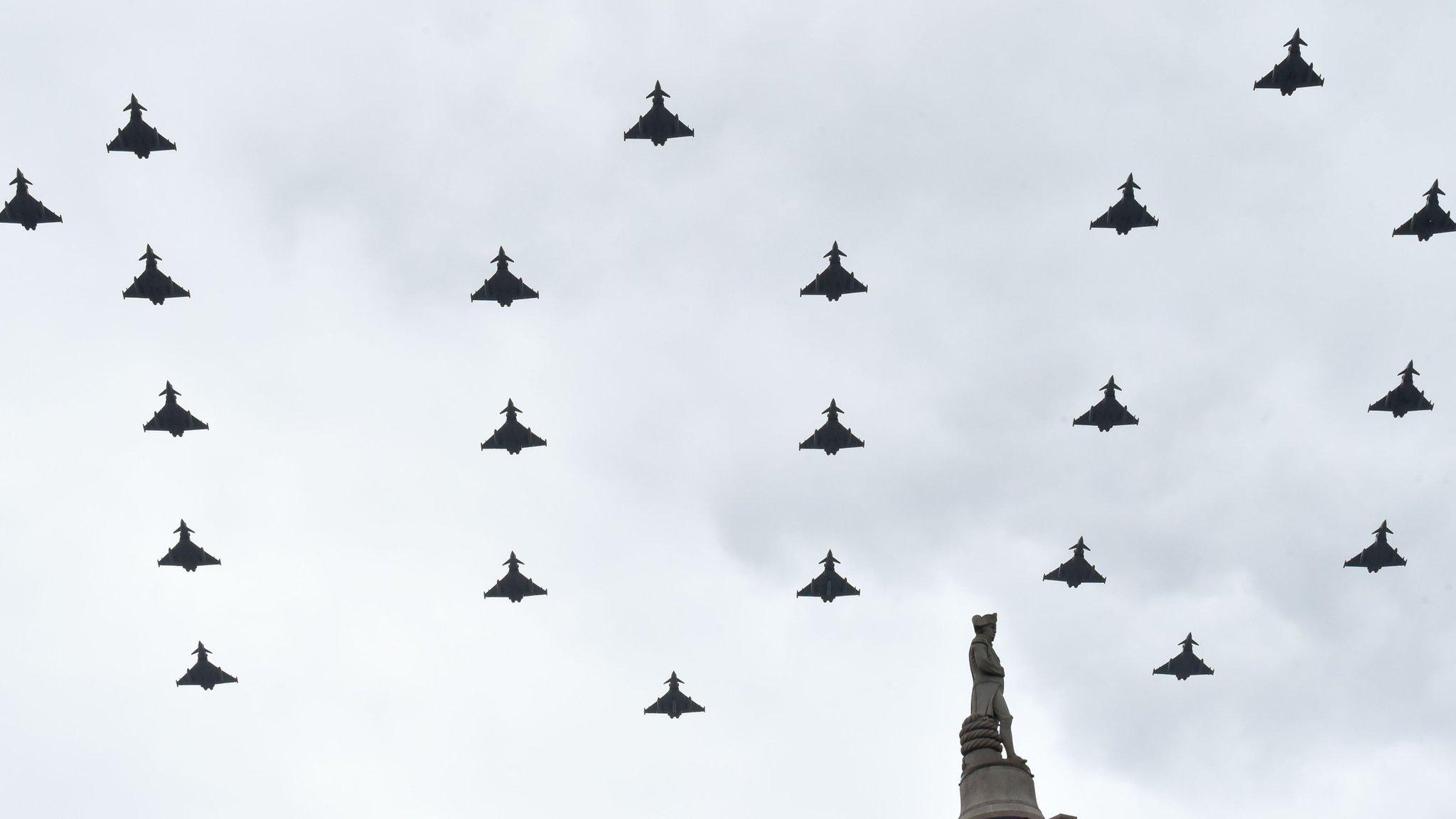
- Published12 April 2018
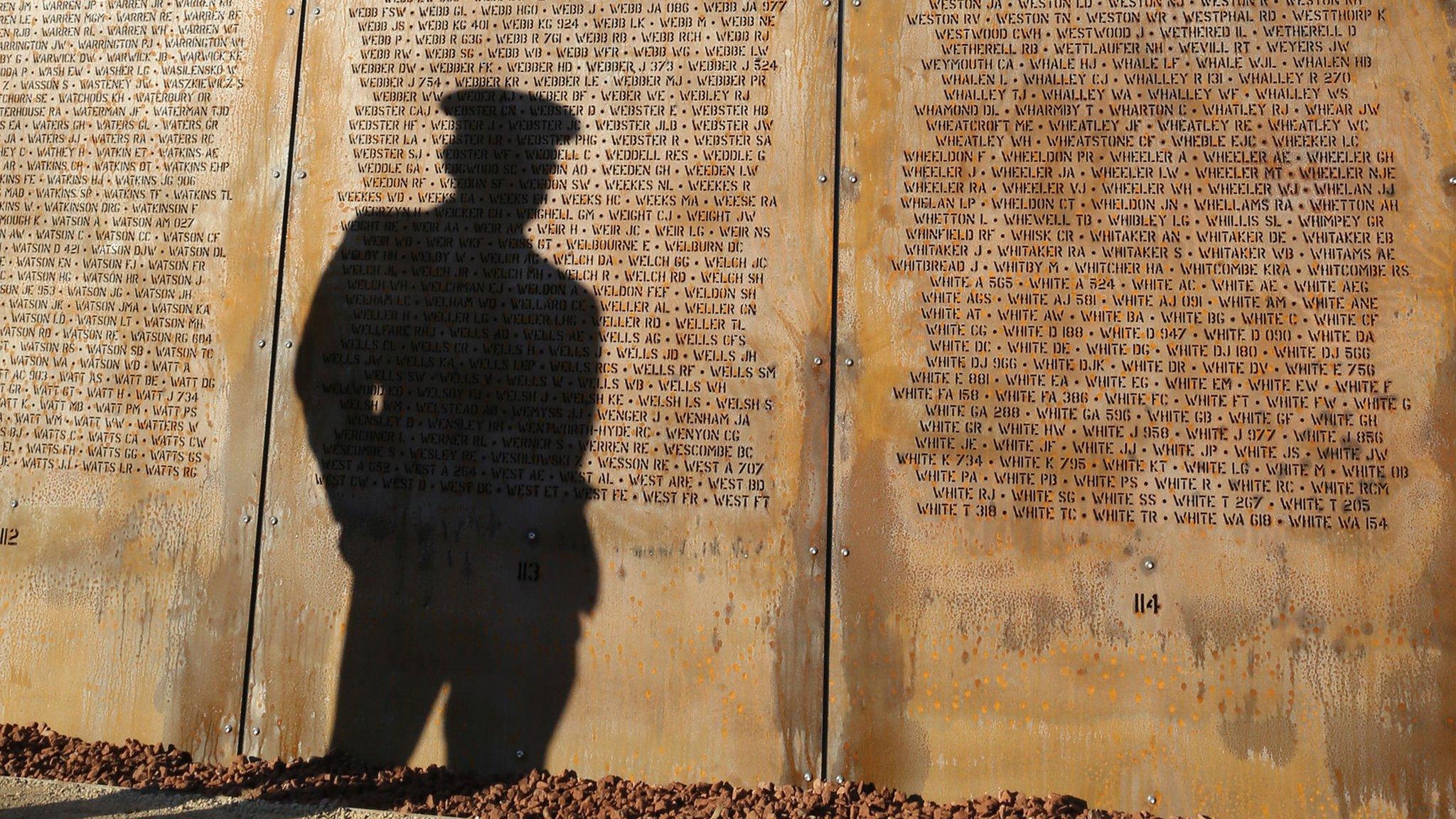
- Published26 May 2018
